Otso Cycles Waheela S: Checkpoint- by Guitar Ted
The Waheela S presents a conundrum for the average cyclist. Is it a mountain bike with drop bars, a gravel bike with a suspension fork and dropper post, or just a confusing amalgam of styles? How does it feel to have a 40mm travel Fox fork and a dropper post on gravel? Where do you even need that? These are the questions I sought to have answered since the last post on this bike, which you can access here. In that post you will find all the tech data and features that this bike has on offer.
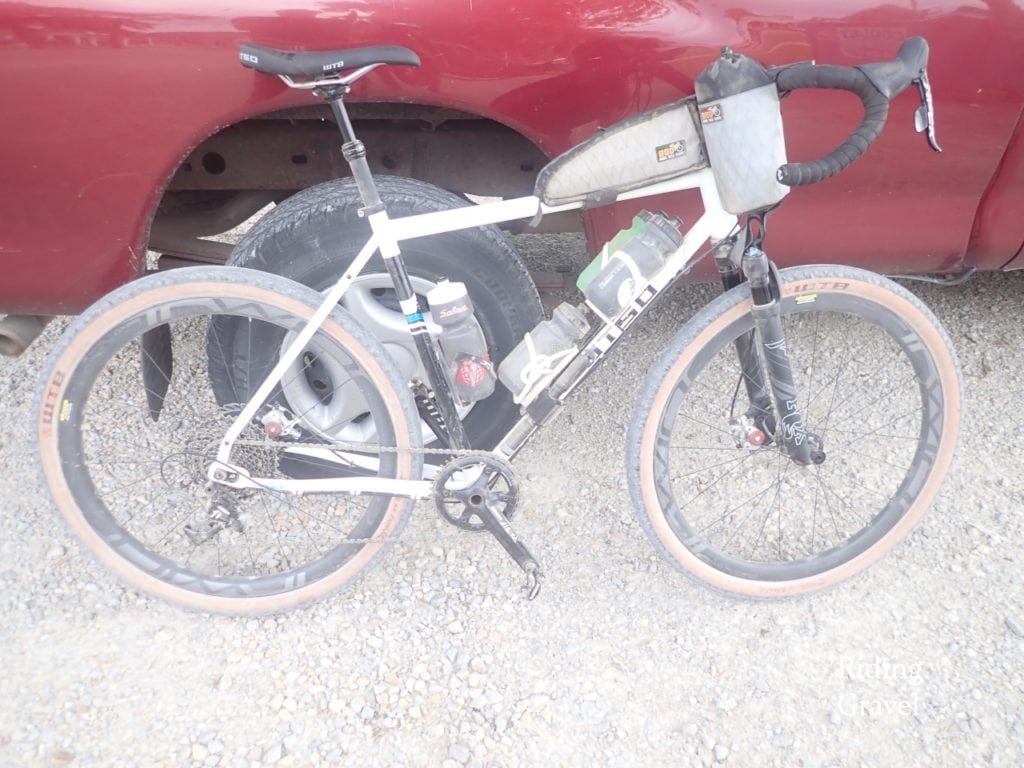
The Changes: There were a few changes made to the Waheela S after I received it to make it fit me better and to accommodate the century on gravel ride I had in mind to use it on. So, I will briefly cover this first.
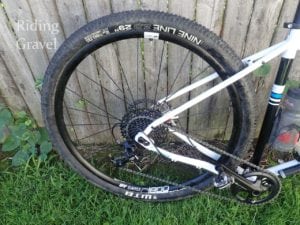
The stem on the Waheela S is shorter than typically spec’ed on a gravel bike due to geometry Otso borrowed from cross country mtb’s. They explain by saying it is a”….a page from the cross-country playbook with increased top tube lengths and shorter stems“. Interestingly I found the Size Large, (akin to a 58cm for reference) to be no longer than many road bike’s top tubes in the 58cm range. The stem was low and positively too short, cramping me up on the bike and forcing a lot of my weight forward over the bars. I swapped out to a 90mm stem with some rise to a much better effect.
With the fit dialed I wanted to swap in some beefier rubber, since much of the course is dirt road and primitive. I found that a 29″ X 2.0 WTB Nineline tire swapped into the rear of the Waheela S with room to spare. However; the Fox AX suspension fork, with its drastically reduced travel, will not clear a 29” tire. Bummer! After contacting my Otso rep, I was also told that the Lauf Grit is not recommended for that large a tire either. Our tester MG confirmed as much to me, as he has a Lauf True Grit on test for this site here.
Had I specified that the Waheela S come with the carbon Lithic fork, I could have run 29″ers on both ends, but alas, I ended up with 650B wheels and tires instead. The tires I used were the WTB Byways in a 47mm width, tubeless, on the Irwin Aon GX 35 carbon wheels tested here.
Ride Performance: I completed the 102 mile course on the Waheela S and here I will break down the opinions I formed for the specific parts of the bike, then an overall opinion will be rendered.
- The Fox AX fork: The most obvious and polarizing feature of the Waheela S is the Fox AX fork. It has a paltry- by mtb standards, 40mm of travel on tap which is adjustable for spring rate, damping, rebound, and compression. It does have a manual lock out feature atop the right fork leg. I set up the air spring over a few rides before I settled upon a pressure I was happy with. I tried to leave the compression as open as possible, and the rebound was set to a faster setting, since medium to large impacts are not common on gravel. The fork felt supple enough, absorbing a lot of chatter. Fox is known for a smooth feeling travel and the AX is no exception to this. Well, that is until you bottom it out. The fork gives you no real ramping up effect, and if you hit something big enough- like an embedded rock on a dirt road at speed, you get a resounding clunk! when you bottom out the AX fork. I liked the fork’s performance most of the time, and it did a great job on washboard or slight “G” outs. But medium to big potholes, rocks, or ruts would get you into a place where the fork was overwhelmed in a hurry.
-
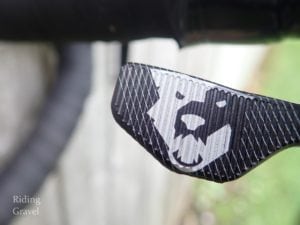
The Wolf Tooth dropper lever is great, it’s just in a bad place. The KS E30i Dropper Post With Wolf Tooth Lever: Look, I’ll admit right up front that I was a huge skeptic of using a dropper post on gravel rides. I mean, why? But after using one on the Waheela S, I’m sold. Here’s why- The dropper allows you to lower your profile and become more aero going down hill. Have you ever seen Pro road riders sitting on their top tubes while descending mountain passes? Well, that effect of getting lower is a real benefit and using a dropper, even on shorter descents, is a game changer. Plus, with a lower center of gravity, you are more stable as well. Of course, it works great on single track, as you would expect. The dropper is activated by the excellent Wolf Tooth lever, which is smooth and operates without fail. However, it is set on the upper portion of the bar next to the stem, requiring you to let go of the hood or drop position to activate it. This can be a non-starter, and I would have liked to have had a dummy shift lever on the SRAM Apex brake lever to activate the dropper instead.
- SRAM Apex 1X: This is my first rodeo with a road based 1X 11 gearing set up. I have used 1X to great effect on my personal off road bikes and on test bikes in the past that were mtb’s. The SRAM set up I used had a 42T drive ring up front and a PG 1130 11-42T cassette. Over the first few rides it was, well…….typical SRAM shifting. I happen to be of the opinion that Shimano shifts smoother and faster, but this Apex 1 wasn’t bad. That is, until things got hot and heavy on the ride. I found that the lowest three cogs on the cassette were balky and the drive train just wouldn’t function in those gears if I chose them. It appeared upon closer inspection that the distance between the upper jockey wheel on the derailleur and the cassette was slightly off, and the copious dirt and dust we experienced exacerbated the problem. That said, it worked like a charm when clean. Hmm…….
- Geometry: The featured “cross country-like” handling wasn’t what I experienced, well unless you meant 1990’s XC mtb handling. The Waheela S felt very much like a drop bar mtb from the 90’s. That may be exciting to you, or you may have no idea what that means. I have never really been fond of handling like that, so it wasn’t my cup of tea. The 650B wheels amplified this and on deeper gravel or on sketchy descents, the Waheela S could be a handful to keep straight. 29″er wheels may have been better, but I won’t be able to test that, unfortunately. Otherwise it is a fine riding bike.
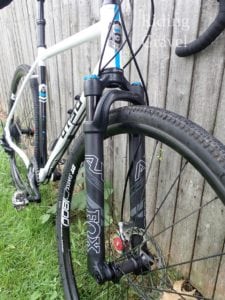 Summing Up: Okay, so what do I think of this bike? Well, it is a unique rig, unlike anything I’ve tried on gravel. The Fox AX works great on regular gravel and dirt, but after hitting a few things at speed and having the fork bottom out so hard, I have to wonder if it is an application which has good intentions but is not the best answer for the problem, as it were. Getting the fork not to bottom out so severely shouldn’t be hard to do, but it would come at the expense of the smaller chatter, and then what would be the point? Added to this would be the required maintenance schedule, and then it gets harder to make sense of this fork. Still, some may see the value in it, so I cannot totally pan it. That said, it seems like a 1990’s sort of set up. One fellow rider quipped that it would make more sense to develop a bike for 100mm of travel and then have a fork that would actually be a capable device on all sorts of terrain. You know, sort of like a Fargo……
Summing Up: Okay, so what do I think of this bike? Well, it is a unique rig, unlike anything I’ve tried on gravel. The Fox AX works great on regular gravel and dirt, but after hitting a few things at speed and having the fork bottom out so hard, I have to wonder if it is an application which has good intentions but is not the best answer for the problem, as it were. Getting the fork not to bottom out so severely shouldn’t be hard to do, but it would come at the expense of the smaller chatter, and then what would be the point? Added to this would be the required maintenance schedule, and then it gets harder to make sense of this fork. Still, some may see the value in it, so I cannot totally pan it. That said, it seems like a 1990’s sort of set up. One fellow rider quipped that it would make more sense to develop a bike for 100mm of travel and then have a fork that would actually be a capable device on all sorts of terrain. You know, sort of like a Fargo……
The clearance the Waheela S has in the back is amazing, but with a Lauf or Fox AX suspension fork you can’t use a 29″er tire up front. This seems like a misstep as well. (See Fargo comment above.) So, the fork is interesting, works a trick much of the time, but leaves me wanting.
I’m also not buying into the modern short stem/long top tube story on this bike. For one thing, generally speaking this school of thought employs wider bars with that shorter stem, but this test bike came with a narrower set of bars than I would typically use on a gravel bike. In my opinion, the Waheela S has traditional geometry in that you need a longer stem than Otso specs. Otherwise it was fine, and I think that with the Lithic fork, 29″ wheels, and a wider set of handle bars, this bike would really come into its own.
The dropper is not something you really need, but it makes riding more fun. I like fun. So, this new idea for riding gravel makes sense to me. I mean, who doesn’t like going faster down hill?
So Far……The Waheela S is packed with features that may make sense for some of you. The Fox AX fork is impressive, but at 40mm of travel, its useful range is somewhat limited. The dropper post is revelatory. It won’t be everyone’s cup of tea, but it adds a dose of fun that is undeniable. The limitation to 700 X 45 or skinnier tires, or 650B, up front is disappointing if you get a suspension fork because the back end of the Waheela easily handles 29″ X 2.1″ rubber. Overall the bike handles well and it can be quite a versatile bike depending upon which spec level you choose.
Stay tuned for the “At The Finish” post coming in a couple of weeks……
Note: Otso Cycles sent over the Waheela S for test and review to RidingGravel.com at no charge. We were not paid nor bribed for this review and we will strive to give our honest thoughts and opinions throughout.



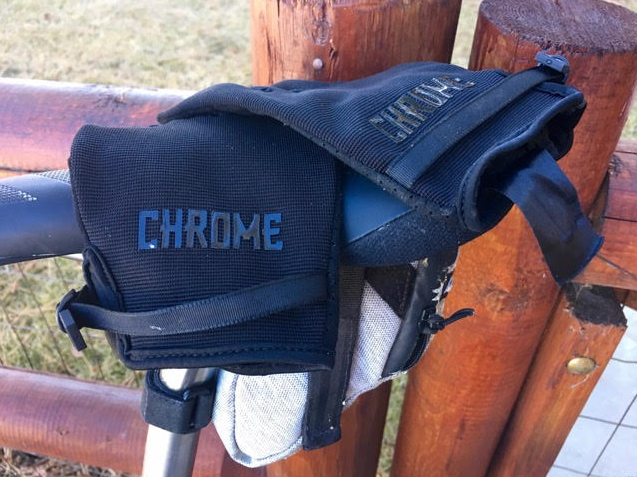
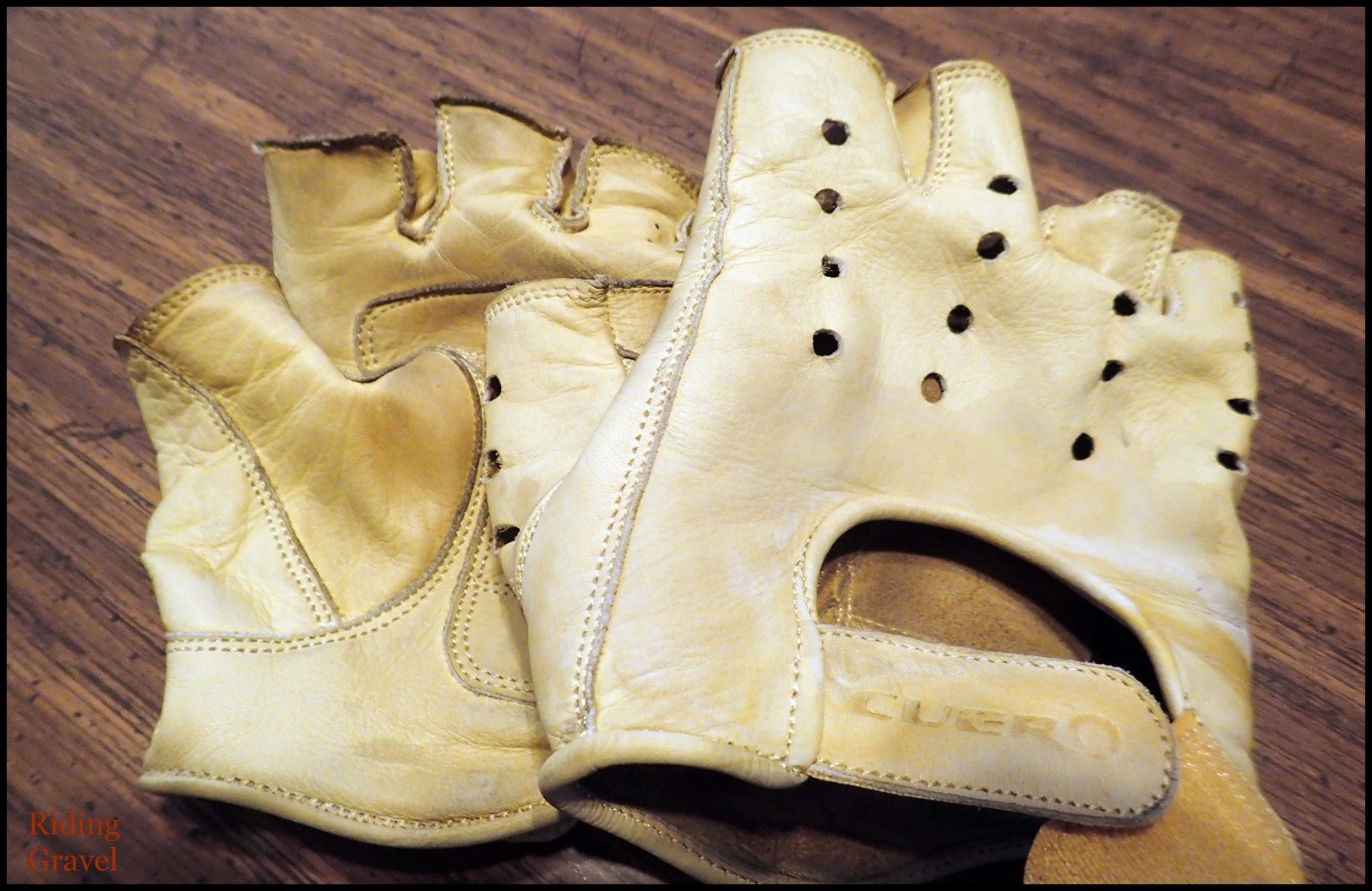
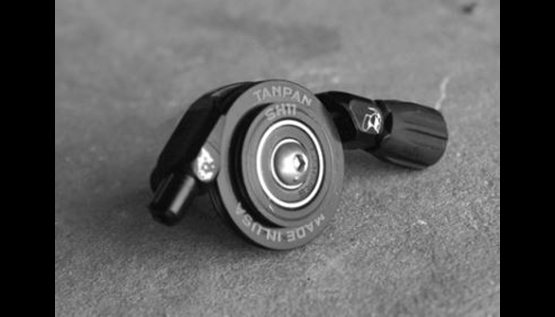
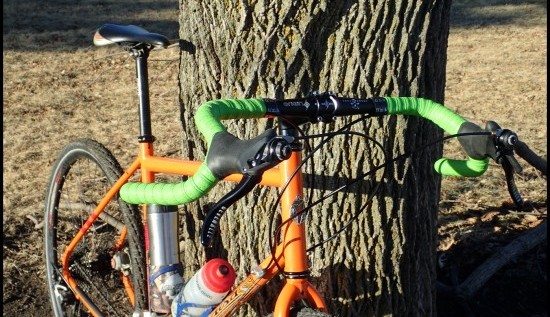
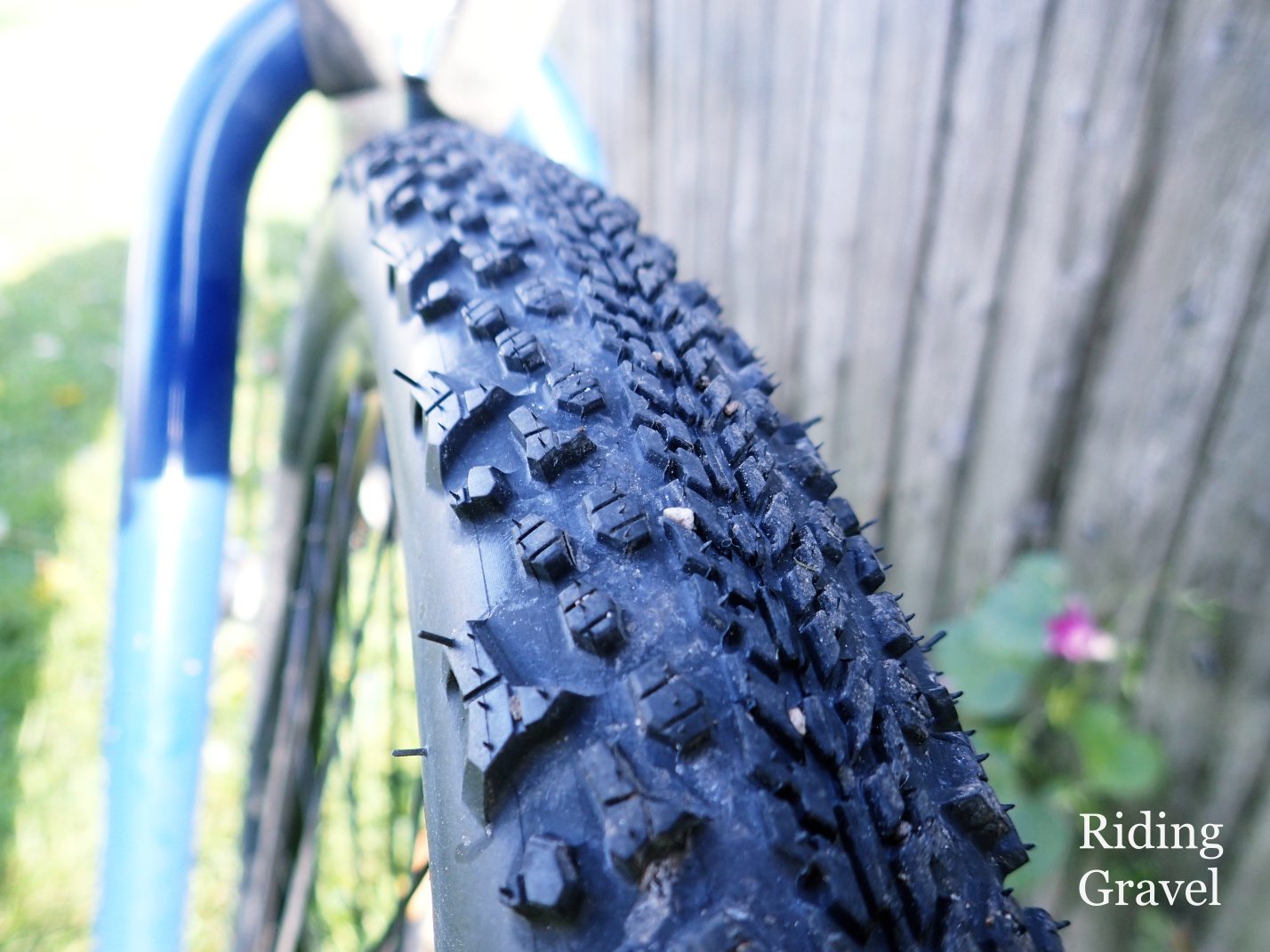
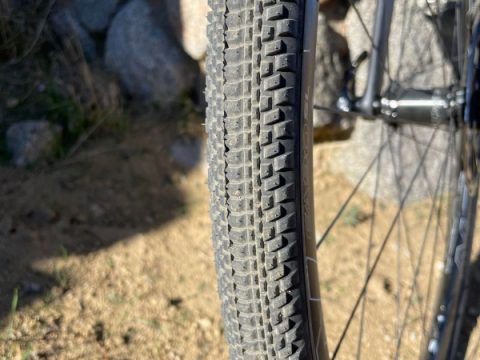
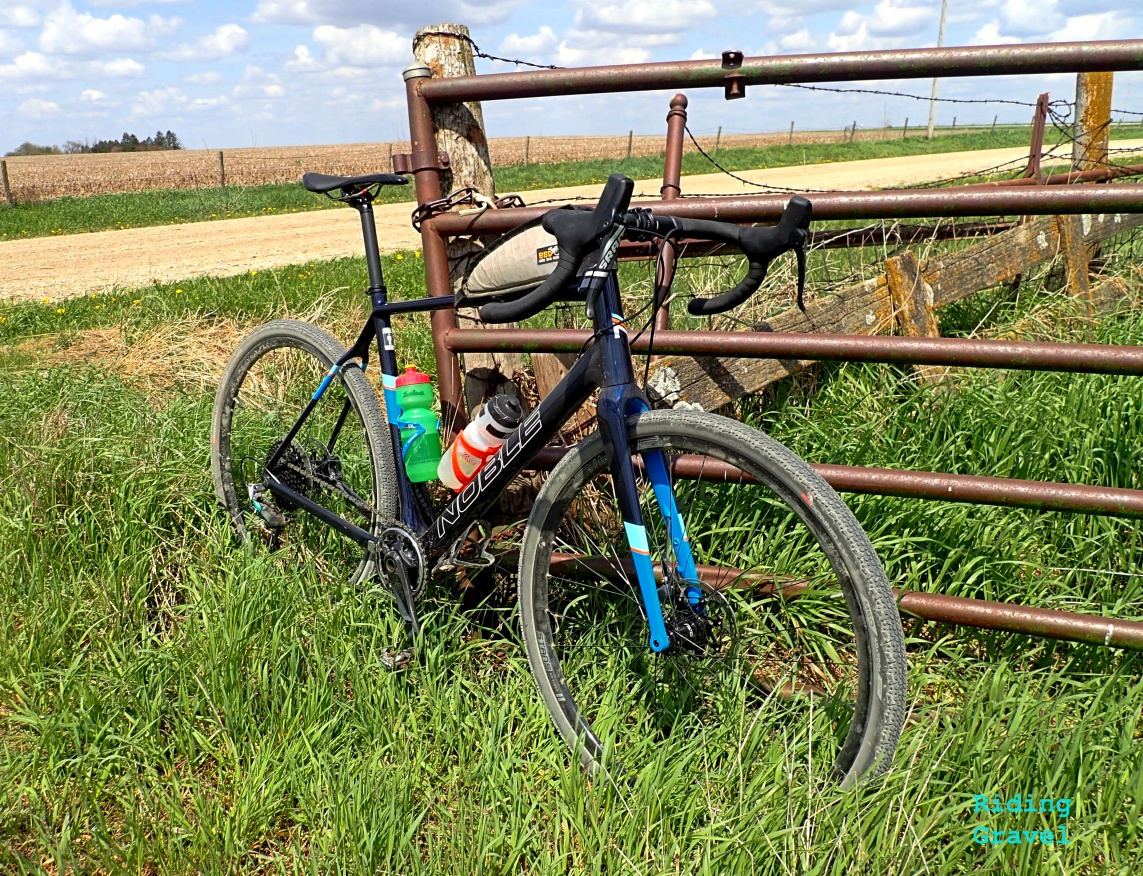

Pictures indicate you’re running the dropouts in the rear-most position, I presume that means handling would get yet more twitchy if you were to move the axle forward?
Geo stays the same I presume with the lithic fork? (I don’t think I’m interested in the fox fork)
They sell the Waheela with an adapter when used with the Lithic fork.
The Lithic fork is fine if you’re running really big 29″ wheels, but if you’re gonna run anything smaller I’d get something with bottle or light mounts.
Never say never but adding a 40mm suspension fork to a Gravelbike seems like an expensive, heavy, high tech, and high maintenance way to add a little suspension. Using 26+ wheels with 26×2.8 tires on i30 rims at ~16 psi would provide about the same amount of travel. The cost of 26+ wheels would be about equal to the cost of typical Gravel wheels. The additional weight of the 26+ wheels over typical Gravel wheels would likely be about equal to the additional weight of the suspension fork over a rigid carbon fork. In addition, the 26+ bike would have suspension on both wheels not just the front.
I have nothing against suspension. I ride a 5+ inch full-suspension Plus mountain bike. However, I like the purity and simplicity of a full-rigid Gravelbike. Using low tech Plus wheels is a reasonable way to add some suspension while maintaining full-rigid simplicity at very little or no cost.
I hope that some bike manufacturer will produce a light-weight 26+ Gravelbike!